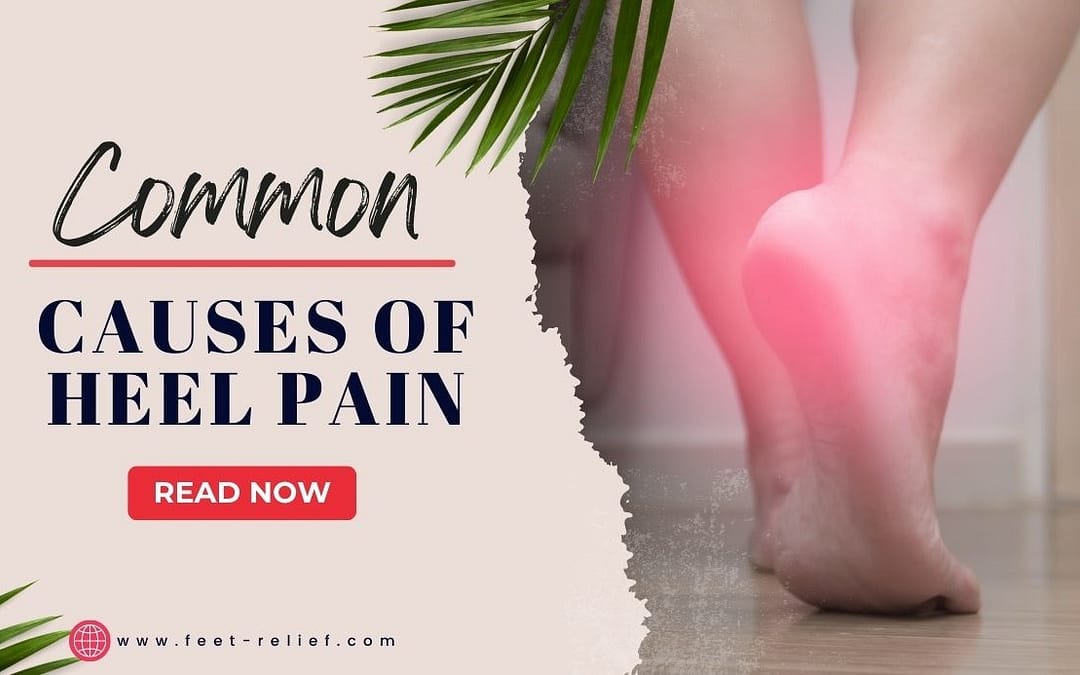
Causes of Heel Pain
Top Causes of Heel Pain: Key Factors and Prevention Tips

Image Source: FreeImages
Introduction to heel pain: Common concerns and symptoms
Heel pain is a common complaint among people of all ages, and it can be caused by a variety of factors. It is often described as a sharp, stabbing, or throbbing pain that occurs in the bottom, side, or back of the heel. The pain can be localized or spread throughout the heel area, and it may worsen when walking, running, or standing for long periods.
The severity of heel pain can range from mild discomfort to debilitating pain that interferes with daily activities. There are numerous potential causes of heel pain, and understanding the underlying cause is crucial for proper treatment and prevention. This article will explore the anatomy of the heel, the top causes of heel pain, contributing factors, diagnosis, treatment options, and prevention tips.
Anatomy of the heel: Understanding the structure
The human heel is a complex structure composed of various bones, ligaments, tendons, and muscles. The calcaneus, or heel bone, is the largest bone in the foot and serves as the foundation for the heel’s support and stability. The plantar fascia, a thick band of tissue that connects the heel bone to the toes, provides arch support and absorbs shock during walking and running.
Several tendons and muscles are also involved in the heel’s structure, including the Achilles tendon, which connects the calf muscle to the heel bone. This tendon is crucial for walking, running, and jumping. Additionally, a fluid-filled sac called the bursa is located near the heel bone, providing cushioning and reducing friction between the bone and surrounding soft tissues.
Top causes of heel pain: Identifying the source
a. Plantar fasciitis
Plantar fasciitis is one of the most common causes of heel pain. It occurs when the plantar fascia becomes inflamed, resulting in pain in the bottom of the heel. This condition is often associated with overuse, improper footwear, obesity, or tight calf muscles. The pain is usually worse in the morning or after periods of inactivity.
Related: Plantar fasciitis prevention and treatment
b. Achilles tendonitis
Achilles tendonitis is another common cause of heel pain. It involves inflammation of the Achilles tendon, typically due to overuse or excessive strain. This condition is common among athletes, particularly runners, and can result in pain in the back of the heel or along the tendon.
c. Heel spurs
Heel spurs are bony growths that develop on the underside of the heel bone, often as a result of plantar fasciitis. They can cause pain in the heel, especially when walking or standing for extended periods.
d. Stress fractures
Stress fractures are small cracks in the bone caused by repetitive force or overuse. They can occur in the heel bone, resulting in localized pain and tenderness. Stress fractures are more common among athletes, particularly runners and dancers.
e. Bursitis
Bursitis is inflammation of the bursa, the fluid-filled sac near the heel bone. This condition causes pain and swelling in the heel area, and overuse, injury, or certain medical conditions, such as rheumatoid arthritis can cause it.
Contributing factors to heel pain development
a. Improper footwear
Wearing shoes that do not provide adequate support or cushioning can contribute to heel pain. High heels, worn-out shoes, or shoes that do not fit properly can put excessive strain on the feet, leading to various heel pain causes.
b. Obesity and weight-related issues
Carrying excess weight places additional stress on the feet and can contribute to the development of heel pain. Maintaining a healthy weight can help alleviate pressure on the feet and reduce the risk of developing heel pain conditions.
c. Overuse and repetitive stress
Participating in activities that involve repetitive stress on the feet, such as running or jumping, can increase the risk of developing heel pain. Overuse can lead to inflammation and damage to the structures in the heel, resulting in pain and discomfort.
d. Underlying medical conditions
Certain medical conditions, such as rheumatoid arthritis, gout, or nerve disorders, can cause heel pain. Additionally, structural abnormalities in the feet, such as flat feet or high arches, can also contribute to the development of heel pain.
Diagnosing heel pain: When to see a podiatrist
If you are experiencing persistent heel pain that does not improve with rest and self-care measures, it is essential to consult a podiatrist for a proper diagnosis. A podiatrist will perform a thorough examination of your foot, review your medical history, and may order imaging tests, such as X-rays or MRI, to identify the underlying cause of your heel pain.
Related: Common foot problems
Treatment options for various heel pain causes
a. Home remedies and self-care
Many cases of heel pain can be effectively managed with home remedies and self-care measures. Rest, ice, compression, and elevation (RICE) can help reduce inflammation and pain. Over-the-counter pain relievers and anti-inflammatory medications may also provide relief. Additionally, wearing supportive shoes, using orthotic inserts, and practicing proper foot care can help alleviate heel pain symptoms.
b. Medical interventions and therapies
In more severe cases or when home remedies do not provide sufficient relief, medical interventions may be necessary. These may include corticosteroid injections, physical therapy, prescription medications, or immobilization with a cast or splint. In rare cases, surgical intervention may be required to address the underlying cause of heel pain.
c. Alternative treatments
Alternative treatments, such as acupuncture, massage therapy, or chiropractic care, may provide relief for some individuals with heel pain. These treatments can help improve circulation, reduce inflammation, and promote healing.
Prevention tips for heel pain
a. Choosing the right footwear
Wearing supportive and well-fitting shoes is crucial for preventing heel pain. Choose footwear with adequate cushioning, arch support, and a slightly raised heel to help distribute weight evenly and reduce stress on the feet.
b. Maintaining a healthy weight
Excess weight can place additional strain on the feet, contributing to the development of heel pain. Maintaining a healthy weight can help alleviate pressure on the feet and reduce the risk of heel pain.
c. Stretching and strengthening exercises
Performing regular stretching and strengthening exercises for the feet, calves, and Achilles tendon can help prevent heel pain. These exercises can improve flexibility, reduce tension, and promote overall foot health.
d. Avoiding overuse and excessive stress
Avoiding activities that place excessive stress on the feet or participating in a variety of activities to reduce repetitive stress can help prevent heel pain. Incorporate rest periods and cross-training into your exercise routine to give your feet time to recover and reduce the risk of overuse injuries.
Heel pain in athletes: Special considerations
Athletes, particularly runners, are at an increased risk of developing heel pain due to the repetitive stress and impact associated with their sport. In addition to the prevention tips mentioned above, athletes should ensure they are wearing appropriate footwear for their sport, gradually increasing training intensity, and addressing any biomechanical issues, such as overpronation or flat feet, with the help of a podiatrist.
The importance of addressing heel pain early
It is essential to address heel pain early to prevent further damage and complications. Ignoring heel pain can lead to chronic pain, decreased mobility, or the development of other foot problems. Seeking prompt medical attention and following the recommended treatment plan can help ensure a successful recovery and prevent future heel pain issues.
Taking control of your heel pain journey
Understanding the causes of heel pain, identifying contributing factors, and seeking appropriate treatment are essential steps in managing heel pain effectively. By implementing prevention strategies and addressing heel pain early, individuals can take control of their heel pain journey and enjoy healthy, pain-free feet.





